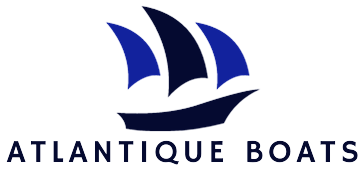Are you in search of the perfect watercraft that combines comfort, versatility, and power? Look no further than the pontoon boat with an inboard motor. This remarkable vessel offers a delightful experience on the water, whether you’re seeking a relaxing day of fishing, a thrilling water sports adventure, or simply a leisurely cruise with friends and family.
The pontoon boat, known for its stability and spaciousness, provides a remarkable platform for all your water-based activities. With its flat bottom and buoyant tubes, this watercraft offers unparalleled stability, ensuring a smooth and enjoyable ride even in choppy waters. Equipped with an inboard motor, this boat delivers exceptional power, allowing you to navigate through the water effortlessly and reach your desired destinations swiftly.
Join me as we explore the incredible features and benefits of pontoon boats with inboard motors. From their luxurious seating options to their advanced technological features, we will delve into everything you need to know to make an informed decision about your next watercraft. So, let’s set sail on this exciting journey and discover why the pontoon boat with an inboard motor is the ultimate choice for water enthusiasts.
Pontoon Boat with Inboard Motor: A pontoon boat with an inboard motor offers a versatile and powerful boating experience. With an inboard motor, you can enjoy smoother handling, increased speed, and improved fuel efficiency. These boats are perfect for cruising, water sports, and fishing. They provide ample space for passengers and storage. Whether you’re a beginner or an experienced boater, a pontoon boat with an inboard motor is a great choice for your next adventure.
How to Use a Pontoon Boat with Inboard Motor
Introduction
A pontoon boat with an inboard motor is a versatile and enjoyable watercraft that offers a smooth and comfortable ride. Whether you are a beginner or an experienced boater, understanding how to properly operate and navigate a pontoon boat with an inboard motor is essential for a safe and enjoyable experience on the water.
Getting Started
Step 1: Familiarize Yourself with the Boat
Before you take the pontoon boat out on the water, it is important to familiarize yourself with its features and controls. Take the time to read the owner’s manual and locate all the essential components, such as the throttle, steering wheel, and gauges. Understanding how these controls work will ensure a smooth operation of the boat.
Additionally, check the boat’s safety equipment, including life jackets, fire extinguisher, and first aid kit. Ensure that all necessary safety equipment is on board and in good working condition.
Step 2: Preparing for Launch
Prior to launching the pontoon boat, perform a thorough inspection to ensure it is in proper working order. Check the fuel levels, engine oil, and any other fluid levels. Inspect the hull for any signs of damage or wear that may affect the boat’s performance.
Once you have completed the inspection, back the trailer into the water and ensure the boat is properly aligned with the launch ramp. Slowly release the boat from the trailer and allow it to float freely in the water.
Step 3: Starting the Engine
Before starting the inboard motor, make sure all passengers are safely on board and wearing their life jackets. Turn the ignition key to start the engine and allow it to warm up for a few minutes. While the engine is warming up, check that the throttle is in neutral position and the gearshift is in neutral or forward.
Once the engine is adequately warmed up, slowly increase the throttle to engage forward gear. Gradually increase speed and keep a close eye on the gauges to monitor the engine’s performance. Adjust the trim of the motor as needed to ensure optimal performance and fuel efficiency.
Step 4: Navigating the Water
When operating a pontoon boat with an inboard motor, it is important to be aware of your surroundings and follow all boating regulations and speed limits. Maintain a safe distance from other boats and obstacles, and always be mindful of changing weather conditions.
Use the steering wheel to maneuver the boat and make gradual turns to avoid sudden shifts in weight. When approaching a dock or a shoreline, reduce speed and approach at a safe angle to avoid any potential damage to the boat or surrounding structures.
Step 5: Docking and Shutting Down
When you are ready to dock the pontoon boat, approach the dock slowly and carefully. Use the throttle and steering wheel to guide the boat into the desired position, and secure it with dock lines to prevent drifting.
Once the boat is safely docked, turn off the engine and allow it to cool down before removing the key. Check the boat for any personal belongings and ensure that all passengers safely disembark.
Conclusion
Using a pontoon boat with an inboard motor can provide endless hours of fun and relaxation on the water. By following these steps and maintaining a responsible boating attitude, you can ensure a safe and enjoyable experience every time you take your pontoon boat out.
Frequently Asked Questions
Pontoon boats with inboard motors are a popular choice for many boating enthusiasts. They offer a comfortable and stable platform for cruising on lakes and rivers. If you have any questions about pontoon boats with inboard motors, we’ve got you covered. Check out the following FAQs:
1. What is a pontoon boat with an inboard motor?
A pontoon boat with an inboard motor is a type of watercraft that features a flat bottom and uses cylindrical floats, or pontoons, to stay afloat. The inboard motor is installed inside the boat, typically in the center. This configuration provides the boat with better balance and stability, making it suitable for leisurely cruising and water activities.
These boats are often equipped with comfortable seating, ample deck space, and various amenities to enhance your boating experience. The inboard motor is typically larger and more powerful than an outboard motor, providing better performance and handling.
2. What are the advantages of a pontoon boat with an inboard motor?
Pontoon boats with inboard motors offer several advantages. Firstly, the inboard motor is located inside the boat, which reduces noise and vibration compared to outboard motors. This allows for a more enjoyable and peaceful boating experience.
Secondly, the inboard motor provides better maneuverability and control, especially at higher speeds. The weight distribution of the inboard motor also contributes to the boat’s stability, making it less prone to tipping or rocking in rough waters. Additionally, these boats often have larger fuel tanks, allowing for longer trips without the need for refueling.
3. How does the inboard motor affect the handling of a pontoon boat?
The inboard motor design of a pontoon boat offers improved handling compared to boats with outboard motors. The inboard motor is centrally located, which helps distribute weight evenly across the boat. This balanced weight distribution enhances stability and reduces the risk of the boat rocking or tilting.
Furthermore, the inboard motor provides better steering control, allowing for smoother turns and maneuverability. The propeller of the inboard motor is submerged deeper in the water, which increases its efficiency and responsiveness. Overall, the inboard motor contributes to a more enjoyable and controlled boating experience.
4. What maintenance is required for a pontoon boat with an inboard motor?
Like any watercraft, pontoon boats with inboard motors require regular maintenance to ensure optimal performance and longevity. Some routine maintenance tasks include checking and changing the engine oil, inspecting the propeller for damage, and cleaning the hull to prevent algae and barnacle growth.
Additionally, it’s crucial to winterize the inboard motor before the colder months to protect it from freezing temperatures. This involves draining the cooling system, fogging the engine, and adding fuel stabilizer. Following the manufacturer’s maintenance schedule and guidelines will help keep your pontoon boat with an inboard motor in excellent condition.
5. Can a pontoon boat with an inboard motor be used for water sports?
Yes, pontoon boats with inboard motors can be used for various water sports activities. The inboard motor provides the necessary power and torque to tow water skiers, wakeboarders, and tubers. These boats often have specialized features such as tow bars or towers to facilitate water sports.
Additionally, the stable and spacious deck of a pontoon boat allows for comfortable seating and ample room for gear and equipment. Whether you enjoy wakeboarding, tubing, or simply cruising, a pontoon boat with an inboard motor can provide an enjoyable and versatile water sports experience.
In conclusion, the pontoon boat with an inboard motor is a versatile and efficient watercraft that offers a wide range of benefits. Its unique design provides stability and comfort, making it ideal for various activities such as fishing, cruising, and entertaining. With its powerful inboard motor, this boat offers a smooth and powerful ride, allowing you to navigate through the water with ease.
Furthermore, the pontoon boat with an inboard motor is not only functional but also aesthetically pleasing. Its sleek and modern design makes it a standout on the water, attracting attention and admiration from onlookers. Whether you are a seasoned boater or a novice, this watercraft is easy to operate and offers a user-friendly experience.
Overall, the pontoon boat with an inboard motor is an excellent choice for those seeking a reliable and enjoyable boating experience. Its combination of stability, comfort, power, and style make it a top choice for any water enthusiast. So, if you are looking to enhance your time on the water, consider investing in a pontoon boat with an inboard motor and embark on unforgettable adventures.

















